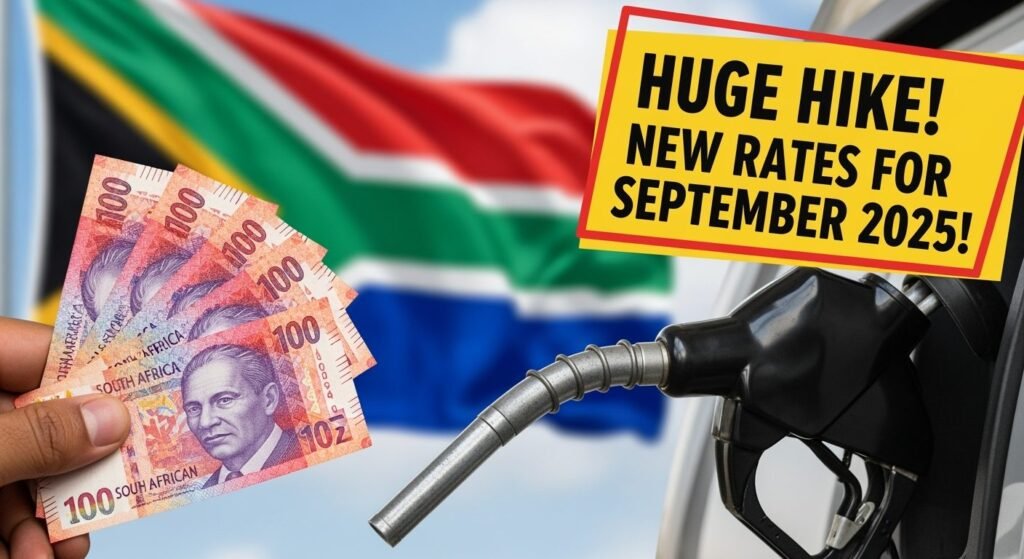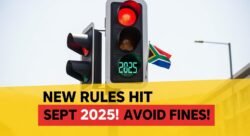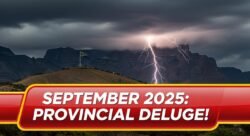South Africa Fuel Price Hike: Today marks another challenging day for South African motorists as provinces across the nation announce the official new fuel rates for September 2025. I know many of you have been anxiously waiting to see just how much more you’ll need to budget for your daily commute. The September 2025 South Africa fuel price hike comes amid global oil market volatility and currency fluctuations that continue to impact our local economy. As we navigate these increasing costs together, it’s important to understand what’s driving these changes and how they might affect your household budget in the coming months. Have you already started planning for these additional expenses?

What’s Behind the September Fuel Price Increases
The latest South Africa fuel price hike didn’t happen in isolation. Several key factors have contributed to the rising costs we’re seeing at the pumps. Global crude oil prices have been on an upward trajectory since mid-2025, primarily due to production cuts from major oil-producing nations and increased demand as global economies continue to grow. Additionally, our rand has weakened against the US dollar in recent weeks, further amplifying the impact on local fuel prices.
The Department of Mineral Resources and Energy cited these international factors as the primary drivers behind the September 2025 adjustments. It’s worth noting that the fuel levy and Road Accident Fund contributions remain unchanged from previous months, meaning the entire increase reflects market conditions rather than additional taxation. This distinction is important as we try to understand the broader economic forces at play in our daily lives.
How These New Rates Will Affect Consumers
The ripple effects of this fuel price hike will extend far beyond just paying more at the pump. Transportation costs form a significant component of almost every product’s price structure, meaning we can expect gradual increases across various consumer goods in the coming weeks. Food prices, in particular, tend to respond quickly to fuel cost changes as distribution networks adjust their pricing models.
 New Traffic Rules September 2025 – Motorists Advised to Learn Changes Before Daily Commute
New Traffic Rules September 2025 – Motorists Advised to Learn Changes Before Daily Commute
For the average South African household, this means tightening budgets even further. If you’re commuting daily, you might need to allocate an additional R200-R300 per month just for fuel expenses. Public transportation fares are also likely to increase as operators adjust to the new cost realities. Small businesses that rely heavily on deliveries or transportation will face difficult decisions about whether to absorb these costs or pass them on to customers.
When Will We See Relief from Rising Fuel Costs
Many of you are wondering when this cycle of increasing fuel prices might end. Analysts suggest we shouldn’t expect significant relief before early 2026. The Department of Energy has indicated that international oil prices would need to stabilize and the rand would need to strengthen considerably before we might see decreases at the pump. Some economic forecasts suggest that the first quarter of 2026 could bring more favorable conditions, but this remains speculative.
In the meantime, the government has promised to explore additional measures to cushion consumers from the full impact of these increases. Discussions about temporary reductions in the fuel levy have resurfaced, though no concrete plans have been announced. The Reserve Bank is also monitoring the situation closely, as fuel prices significantly impact inflation figures and could influence future interest rate decisions.
 Youth Support R12,500 September 2025 – Beneficiaries Advised on Step-by-Step Application Rules
Youth Support R12,500 September 2025 – Beneficiaries Advised on Step-by-Step Application Rules
| Province | Petrol Increase (R/liter) |
|---|---|
| Gauteng | R2.37 |
| Western Cape | R2.29 |
| KwaZulu-Natal | R2.33 |
Why Conservation Strategies Matter Now
With the September 2025 South Africa fuel price hike now official, adopting fuel conservation strategies has never been more important. Carpooling, combining errands into single trips, and regular vehicle maintenance can all help extend your fuel budget. Many South Africans are also exploring alternative transportation options, with sales of electric vehicles showing notable growth despite their higher initial purchase costs.
Public transportation usage has increased by approximately 15% during previous fuel price hikes, and we can expect similar trends this time. If you haven’t already, now might be the time to explore bus routes, train schedules, or ridesharing options in your area. Some employers are also becoming more flexible with remote work arrangements specifically to help employees manage rising commuting costs.
Real Impact on Everyday South Africans
I spoke with Thabo Molefe, a delivery driver from Soweto, who shared how the fuel increases are affecting his livelihood. “Each price hike means I take home less money at the end of the month. I’m now spending almost a third of my income just on fuel,” he explained. Thabo has started combining delivery routes and carefully planning his journeys to maximize efficiency. “I can’t afford to drive around aimlessly anymore. Every kilometer counts.” His story reflects the reality many South Africans face as they adapt to the new economic pressures brought by rising fuel costs.


